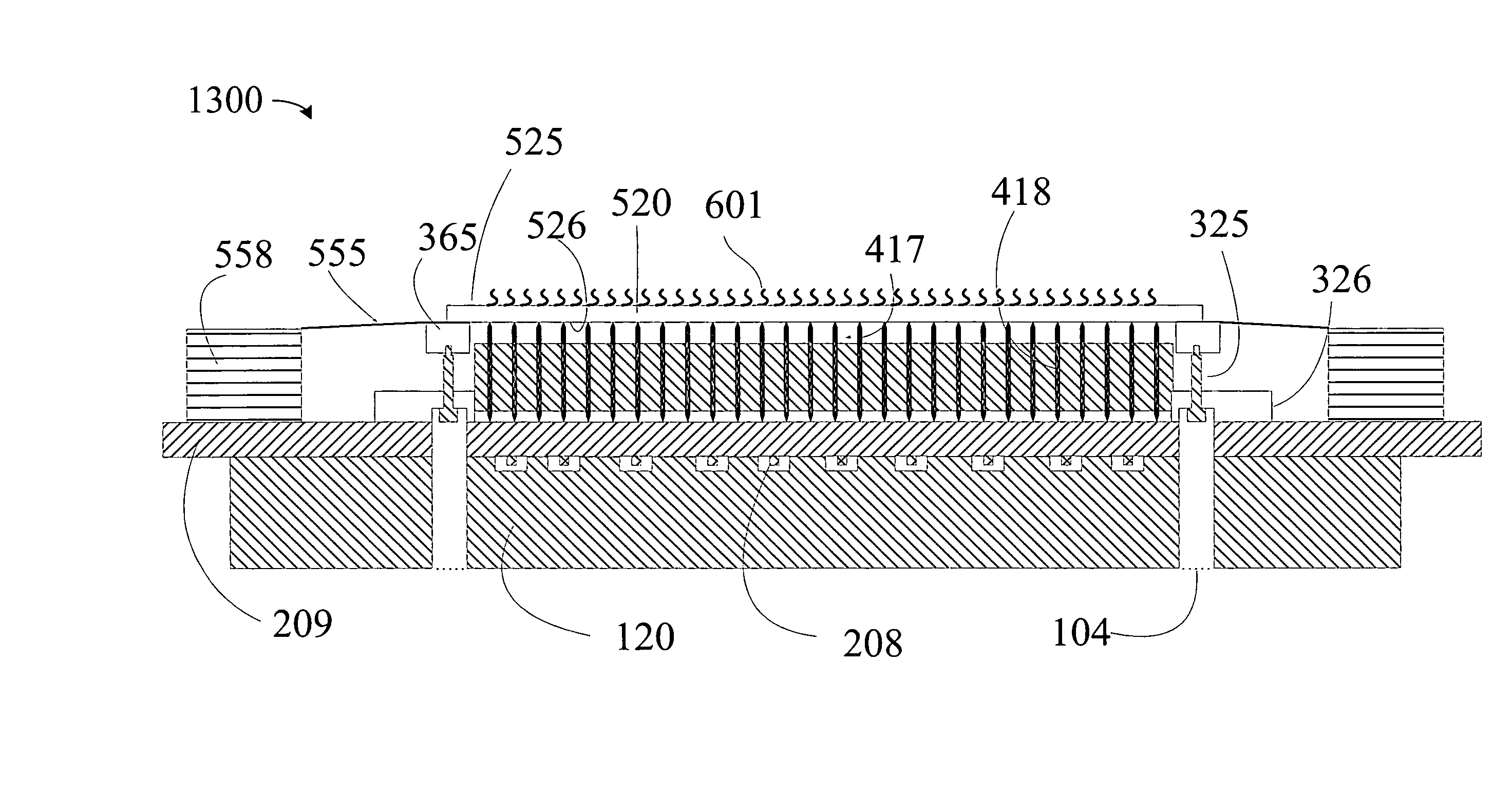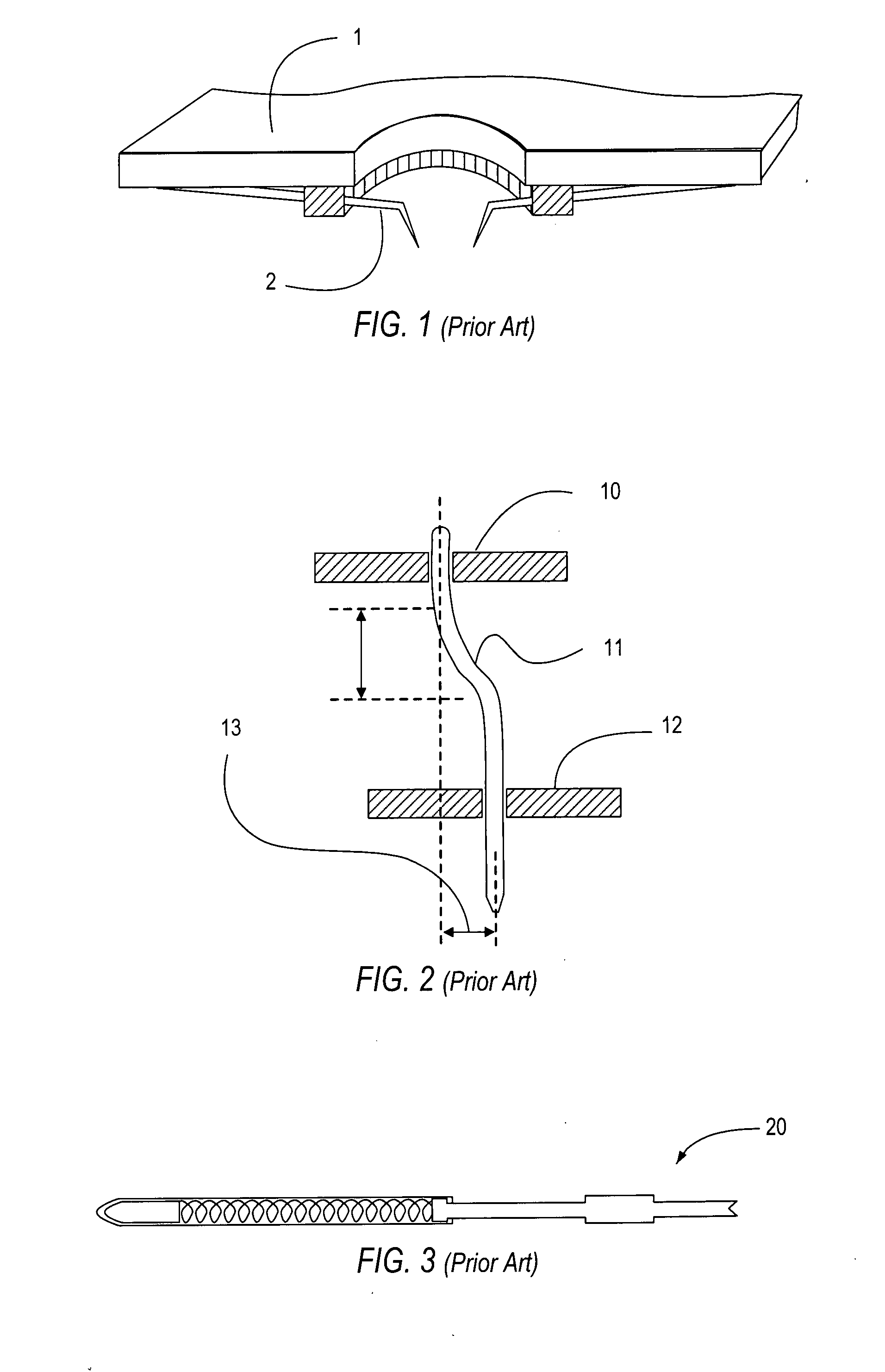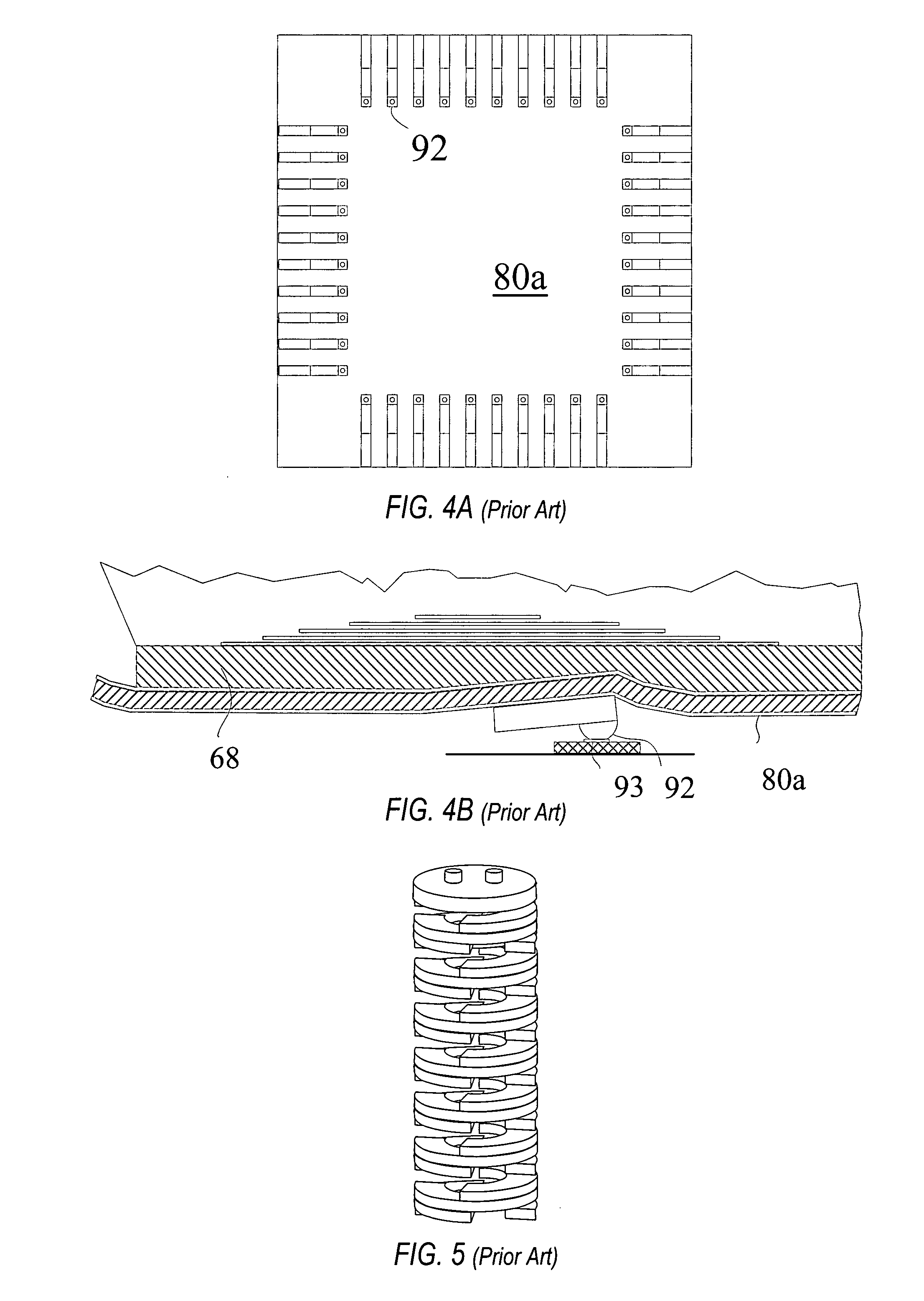These limitations become even more severe as the frequency and number of signals on an IC increase.
As a result, traditional techniques for building probecards cannot meet these performance demands.
The result of testing with traditional techniques can be the rejection of some good ICs that testing falsely classifies as bad units.
Also, the cost of testing ICs has been rapidly growing as a percentage of the total costs to manufacture ICs.
The increasing number of transistors, number of pads and higher frequency operation increases the tester costs and time needed to test ICs.
Even at lower frequencies (<100 MHz), high
inductance probes have more electrical
noise which results in lower test yield (i.e., good ICs are categorized as bad devices).
The manufacturing process needed to align these probes to the pads on an IC is a manual mechanical placement technique which becomes increasingly difficult to perform as the spacing of the electrical pads become closer together.
In most applications, these probes are too long to escape all the signals on a single IC in the space of the IC.
This means for full
wafer testing their use is restricted to very low pin density applications such as NAND Flash ICs that have relatively large die size with low pin counts or BIST (
Built in Self Test) circuits that have fewer than 12 pins per IC.
If the
cantilever spring is damaged during probing, the repair process generally produces a less reliable probe.
Cantilever probes cannot scale to meet the needs of testing at higher frequencies when migrating to a finer pad
pitch.
This means that
cantilever probes have limited applications for simultaneously contacting all of the pads on a single wafer.
Also, as IC pad
pitch shrinks, the frequency performance of these approaches is reduced.
Smaller springs needed for tighter pad pitches are usually more expensive.
The above mentioned vertical spring approaches cannot meet the performance or cost needs of IC testing as ICs continue to scale to tighter pitches, higher pin counts and larger probing areas.
The resistance of long narrow traces will not meet the requirements for testing a full wafer of memory ICs.
Using more routing
layers makes the membrane rigid and it is no longer flexible enough to provide enough compliance to accommodate the planarity differences between the IC wafer and the probecard PCB.
As the size of the manufacturing format grows, the dimensional stability of the membrane is not adequate to stay aligned to the IC pads needed for testing 200 mm or 300 mm wafers.
Larger formats also become prohibitively expensive.
Even in single IC testing applications, if a membrane is damaged, the entire membrane must be replaced which is a large expense.
They are difficult to replace, and repair is limited to springs that are easily accessible near the perimeter of the array of springs.
Although traditional vertical or buckling beam probes can escape within a
DRAM die array, they became prohibitively expensive as these probes need to shrink in size when over 10,000 vertical probes are needed to make contact to fine pad pitches of
DRAM devices.
Repair is very difficult at the customer's
manufacturing line and repair is typically limited to springs near the perimeter of an array.
A
disadvantage of this approach is that the
interposer that makes electrical contact between the z-block and the thin HDI has vertical springs near the active area of the probe and not along the edges of the HDI where it is supported by the compliant membrane or mesh.
This force differential can cause the HDI to bow or tent and causes a planarity error at the tips of the probes.
Poor alignment can damage the insulating layer around the IC pads and insufficient mechanical scrub can affect the electrical reliability of the pad to probe contact.
Being a shorter spring, the electrical parameters are better but this type of spring makes contact to the IC pads with a shallow angle which results in a longer scrub mark.
As the area expands to full wafer
memory testing, this architecture will result in a stack up of tolerances that cannot be managed without increasing the spring height.
Further, these springs 72 are a
batch fabrication on the HDI and cannot be repaired if damaged.
However, this alignment cannot be maintained while the frame is being distorted by the mechanical and thermal forces experienced during the
wafer testing process.
As the number of IC pads and
temperature testing extremes increases, these architectures have difficulty scaling to match the needs.
Another problem encountered when attempting to test a full wafer at one time is that it is difficult to successfully build (yield) a large number of probes (up to 50,000) on the HDI over the area of a 300-mm wafer.
Many of the traditional approaches cannot probe larger areas because they need to
fan out laterally to
route out to the tester connectors.
Traditional approaches cannot scale to performing high performance testing while simultaneously providing electrical connections to all of the ICs on a full wafer.
Scaling of the HDI to match 300 mm and larger wafers is prohibitively expensive.
 Login to View More
Login to View More 


